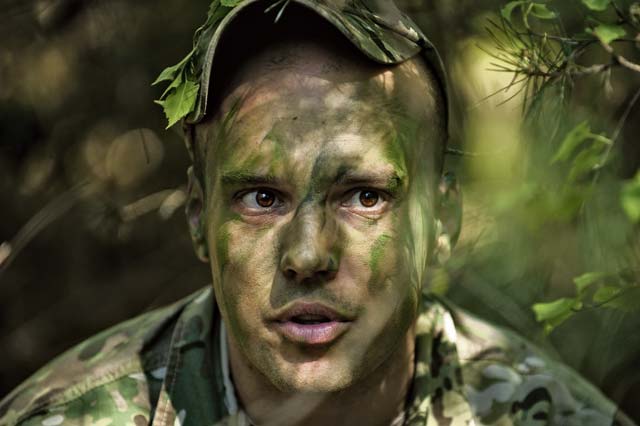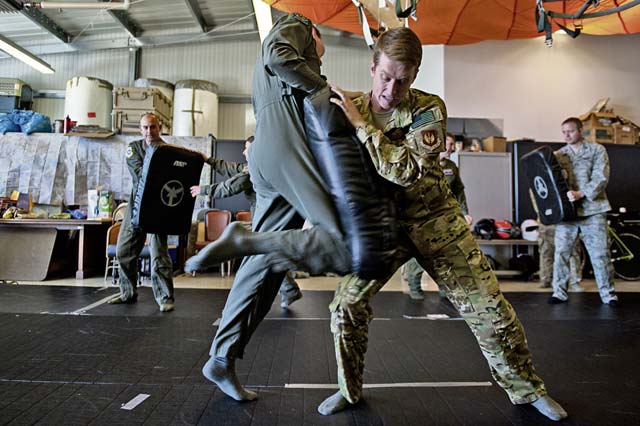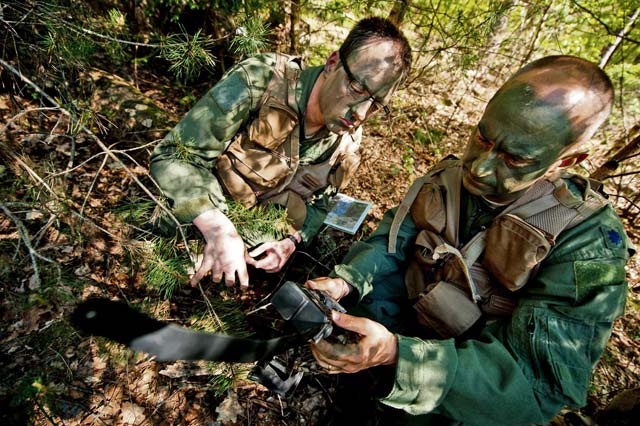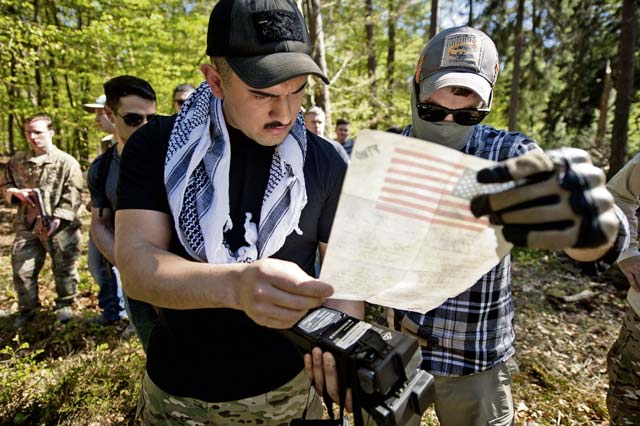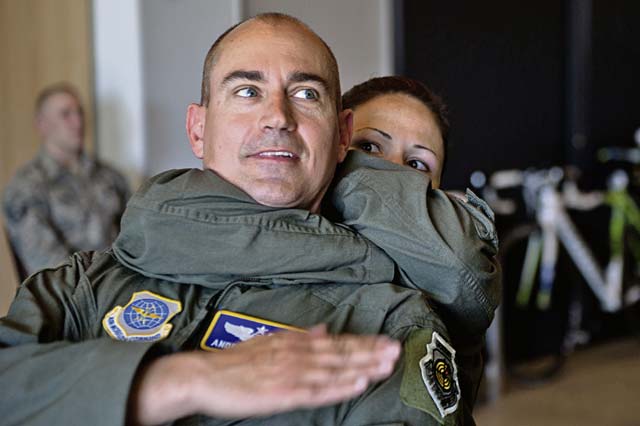
Sweat starts to roll off the bridge of your nose. A panic sets in. The air is thick and the sun is intense, but not as intense as the flame-engulfed debris from the aircraft you jumped out of that is now scattered across the land. With every breath of air, you think “this could be my last.” That is until you recall your training. The training you received by the Survival Evasion Resistance and Escape specialists before the mission.
SERE is a program designed to prepare Airmen for situations in which they may be isolated or held captive. SERE allows Airmen to keep a level-headed mindset while making every effort possible to return home safely.
Ramstein SERE specialists and augmenters work together to give refresher training to aircrew members, enabling proficiency and mission readiness.
“All of our training is meant to shorten the amount of time that the aircrew spend on the ground before rescue can come get them,” said Master Sgt. Reid Allen, 86th Operations Support Squadron SERE specialist.
The training is divided into sections covering water survival, combat survival, high risk of isolation and conduct after capture. However, only two SERE specialists run the program at Ramstein which can be a challenge to effectively conduct the training. That is where the volunteer augmenters come in.
“Without the help from the augmenters and the other folks that we have on the base, the realism would really suffer,” said Allen. “It would be one guy out there with a radio trying to make the aircrew members feel like they’re being chased through the woods, which they’re not going to believe.”
Fortunately for the SERE specialists, dozens of Airmen from the base volunteer to be these augmenters.
“The augmenters made it more realistic,” said Tech. Sgt. Rosalin Panek, 76th Airlift Squadron flight attendant. “They played roles which allowed us to take the skills that we learned and apply them in the scenario.”
“The training is very effective. We have to take it every three years and compared to three years ago, which was excellent, they really revamped it,” said Panek.
For more information on how to become an augmenter, contact Allen at 480-4414.
